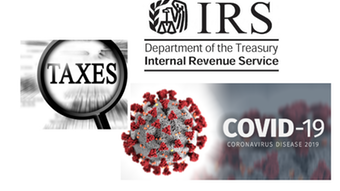Overview of the foreign tax provisions in the Tax Cuts and Jobs Act (“TCJA”)
Here’s a look at some of the more important elements of the new tax law that have an impact on foreign taxation. In general, they are effective starting in 2018.
- Deduction for foreign-source portion of dividends. The new law provides a 100% deduction for the foreign source portion of dividends received from specified 10%-owned foreign corporations by domestic corporations that are 10% shareholders of those foreign corporations. No foreign tax credit is allowed for any taxes paid and accrued as to any dividend for which the deduction is allowed, and those amounts are not treated as foreign source income for purposes of the foreign tax limitation. In addition, if there is a loss on any disposition of stock of the specified 10%-owned foreign corporation, the basis of the domestic corporation in that stock is reduced (but not below zero) by the amount of the allowable deduction.
- Sales or exchanges of stock in foreign corporations. Under this new law provision, if a domestic corporation sells or exchanges stock in a foreign corporation held for over a year, any amount it receives which is treated as a dividend for Code Sec. 1248 purposes, will be treated as a dividend for purposes of the deduction for dividends received discussed above. Similarly, any gain recognized by a CFC from the sale or exchange of stock in a foreign corporation that is treated as a dividend under Code Sec. 964 to the same extent that it would have been so treated had the CFC been a U.S. person is also treated as a dividend for purposes of the deduction for dividends received.
- Incorporation of foreign branches. Under the new law, if a U.S. corporation transfers substantially all of the assets of a foreign branch to a foreign sub, the transferred loss amount must generally be included in the U.S. corporation’s gross income.
- Deemed repatriation. Under the new law, U.S. shareholders owning at least 10% of a foreign sub must include in income for the sub’s last tax year beginning before 2018, the shareholder’s pro-rata share of the undistributed, non-previously-taxed post-1986 foreign earnings of the corporation. The inclusion amount is reduced by any aggregate foreign earnings and profits deficits, and a partial deduction is allowed such that a shareholder’s effective tax rate is 15.5% on his aggregate foreign cash position and 8% otherwise. The net tax liability can be spread over a period of up to 8 years. Special rules apply for S corporation shareholders and for RICs and REITs.
- Global intangible low-taxed income (GILTI). Under the new law, a U.S. shareholder of any CFC has to include in gross income its global intangible low-taxed income (GILTI), i.e., the excess of the shareholder’s net CFC tested income over the shareholder’s net deemed tangible income return (10% of the aggregate of the shareholder’s pro rata share of the qualified business asset investment of each CFC with respect to which it is a U.S. shareholder). The GILTI is treated as an inclusion of Subpart F income for the shareholder. Only an 80% foreign tax credit is available for amounts included in income as GILTI.
- Deduction for foreign-derived intangible income and GILTI. Under the new law, in the case of a domestic corporation, a deduction is allowed equal to the sum of (i) 37.5% of its foreign-derived intangible income (FDII) for the year, plus (ii) 50% of the GILTI amount included in gross income, see above. Generally, FDII is the amount of a corporation’s deemed intangible income that is attributable to sales of property to foreign persons for use outside the U.S. or the performance of services for foreign persons or with respect to property outside the U.S. Coupled with the 21% tax rate for domestic corporations, these deductions result in effective tax rates of 13.125% on FDII and of 10.5% on GILTI. The deduction rates are reduced for tax years after 2025.
- Subpart F changes. The new law made several changes to the taxation of subpart F income of U.S. shareholders of CFCs. Among other things, the new law expands the definition of U.S. shareholder to include U.S. persons who own 10% or more of the total value (not just vote) of shares of all classes of stock of the foreign corporation. In addition, the requirement that a corporation must be controlled for 30 days before Subpart F inclusions apply has been eliminated.
- Base erosion prevention. To prevent companies from stripping earnings out of the U.S. through payments to foreign affiliates that are deductible for U.S. tax purposes, a base erosion minimum tax applies to corporations, other than RICs, REITs, and S corporations, with average annual gross receipts of $500 million or more that made deductible payments to foreign affiliates that are at least 3% (2% in the case of banks and certain security dealers) of the corporation’s total deductions for the year. The tax is structured as an alternative minimum tax and applies to domestic corporations, as well as on foreign corporations engaged in a U.S. trade or business in computing the tax on their effectively connected income.
- Other new law provisions limit income shifting via intangible property transfers, deny deductions for related party payments in hybrid transactions or with hybrid entities, and deny qualified dividend status to dividends received by individuals from surrogate foreign corporations. Finally, the new law introduces a series of modifications to the foreign tax credit system, as well as a number of other international reforms.
© 2018 Thomson Reuters/Tax & Accounting. All Rights Reserved.


